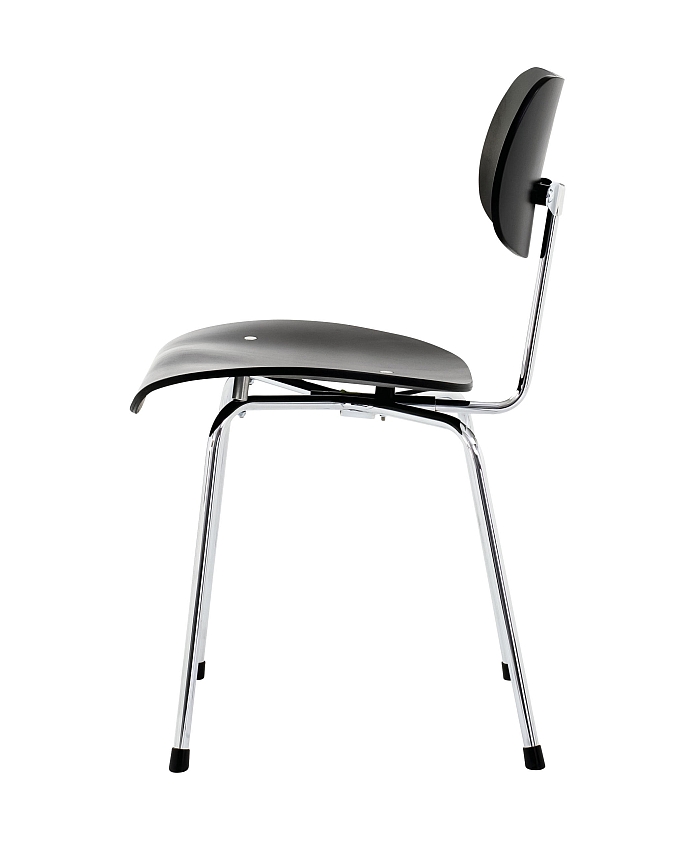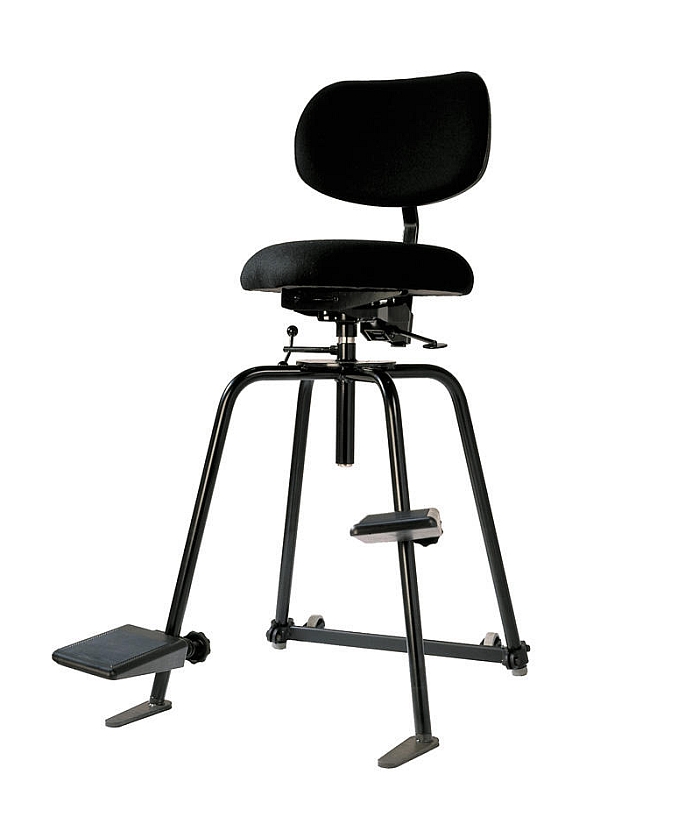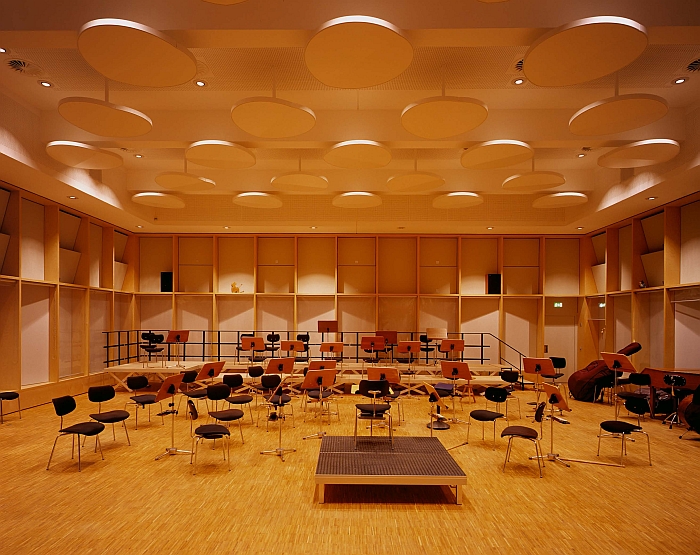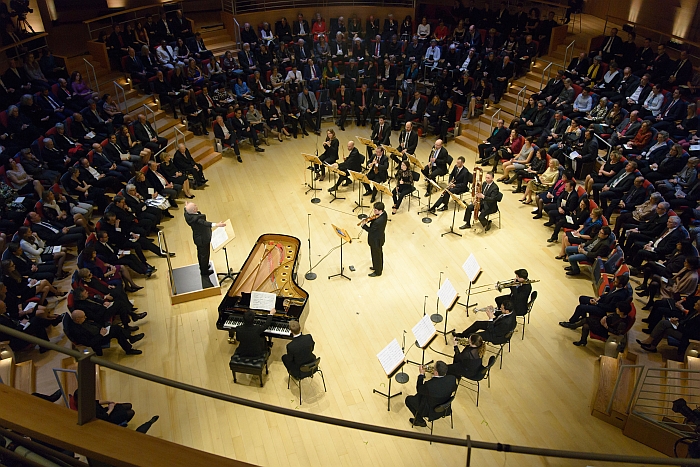In our post The Sedentary Workers: Orchestra Musicians we explored the unique world of orchestra musicians' chairs. One of Europe's largest, and most experienced, manufacturers of orchestra and musicians' chairs is Esslingen based Wilde+Spieth. Who thus seemed an ideal address to learn more about the orchestra chair and the orchestra chair market.....
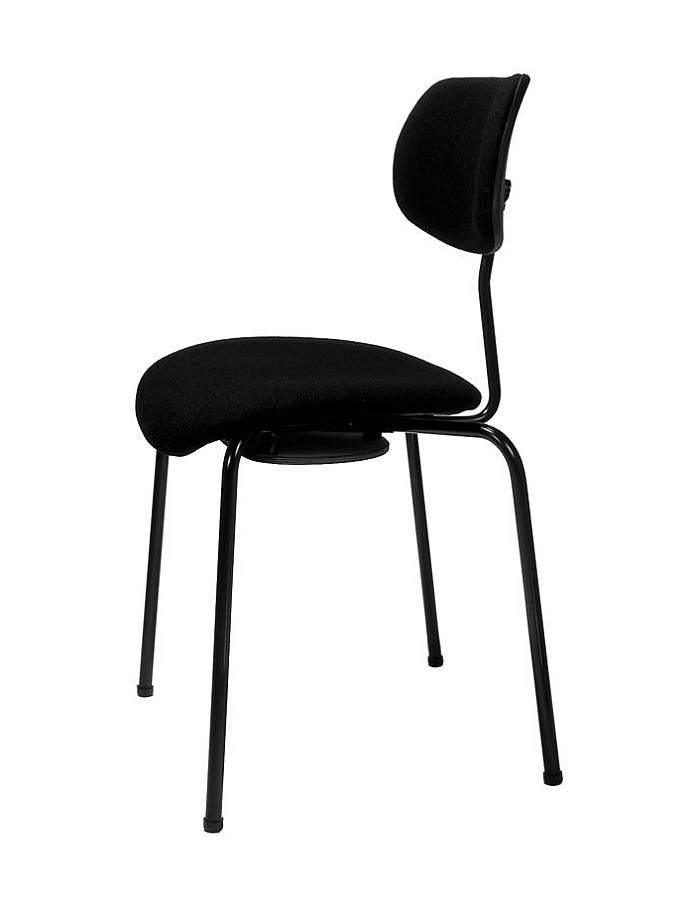
Originally a manufacturer of window shutters, in 1948 the German architect and designer Egon Eiermann commissioned Wilde+Spieth to construct custom blinds for one of his architectural projects, before, and admittedly somewhat overly casually enquiring, "Kinderchen, can you also build chairs?". They could, they did and Egon Eiermann subsequently went on to design a collection of some 30 chairs for Wilde+Spieth, including works such as the SE 18, SE 42 or SE 68. And in 1956 an orchestra chair. From that original orchestra chair Wilde+Spieth have developed a range of chairs for differing instruments and playing positions, chairs which are used by, and amongst many others, the Berliner Philharmonie, Metropolitan Opera New York, Festspielhaus Bayreuth or the Elbphilharmonie Hamburg, for whom together with Bremen based designer Oliver Niewiadomski Wilde+Spieth also developed a new battery powered, radio controlled music stand lamp.
To learn more about the peculiarities of the orchestra chair, orchestra musicians and the contemporary orchestra chair market, we met up with Wilde+Spieth's CEO Thomas Gerber, and began by asking how Wilde+Spieth came to orchestra chairs.......
Thomas Gerber: In 1956 Egon Eiermann needed chairs for a Musiksaal project in Stuttgart, nothing suitable was available and so, in principle, he took the SE 68, added some upholstery, and that was the chair. The musicians' response to that chair was largely "Nice, but we need more", which is understandable, for all when one considers that different instruments have very differing demands and require different sitting positions, and so for Wilde+Spieth the involvement in that project was the impetus to start developing chairs for musicians which reflect these differing needs.
smow blog: And was that development then in conjunction and cooperation with musicians?
Thomas Gerber: Exactly, together with musicians we starting developing, and continue to develop, the chairs, keep seeking to perfect that which have, although in many respects one has only a limited number of possibilities. And so today while we still have a non-height adjustable chair based largely on the SE 68, albeit with a special upholstery and a slightly crooked back to allow a more vertical sitting position, we also have height adjustable chairs and chairs where you can adjust the seat angle, height of the backrest and angle of the backrest to optimise the sitting position depending on the nature of the instrument. And one must also remember that aside from the musicians an important person is the orchestra attendant, they have to stack, store, move, arrange, re-arrange the chairs, and need to do such as quickly and efficiently as possible, and so that also needs to be considered.
smow blog: You mentioned the upholstery, in how far does that have to be matched to the demands of orchestra musicians?
Thomas Gerber: We use a rubber fiber upholstery, principally to optimise the removal of moisture. Orchestra musicians sweat relatively quickly, and so its important than even after several hours of sitting the upholstery is still dry, and in addition with the rubber fiber the seats maintain their form over time and don't, for example, develop indentations as happens with foam seats, and this helps extend the lifetime of a chair.
smow blog: Can one compare the development of your orchestra chairs with that of office chairs, we're thinking particularly in terms of technical advances......?
Thomas Gerber: In the 1970s Wilde+Spieth was a major producer of office chairs, and a lot of the technology in our orchestra chairs came from those office chairs, and has remained unchanged. With the office chair one of the major developments has been the use of pneumatic springs, but they have two problems, firstly they are never 100% stable, there is always a little movement, in an office chair that is irrelevant but for a professional musician is very important, and secondly, sooner or later, pneumatic springs emit a noise, and that is a major problem, and so in our orchestra chairs we use a locking nut height adjustment system which was developed in 1949. Which sounds ridiculous when you consider office chair technology, but it functions, has proved itself and if properly serviced lasts forever. And so with our orchestra chairs a lot of the development work is concerned with, for example, materials and for all reducing noise emissions to an absolute minimum.
smow blog: Everything started with Egon Eiermann, was he also involved in these further developments?
Thomas Gerber: Initially Egon Eiermann was very heavily involved, up until the moment the chairs started to move away from the SE 68, and so Eiermann had no involvement with the various height adjustable chairs. With orchestra chairs design is in many respects subordinate to the engineering, the technology we employ looks simple, but is deceptive, there is a lot of technical finesse involved, and over the years a few firms have tried to copy our technology, none have succeeded! And ultimately musicians don't care what the chair looks like, it must be comfortable, stackable, durable, and most importantly mustn't emit any noise.
smow blog: In which context, do the chairs have an acoustic effect?
Thomas Gerber: Yes, although that isn't necessarily relevant for all orchestras, where, for example, the musicians sit in a pit the sound goes upwards and so the chairs aren't relevant in an acoustic context. However for free standing orchestras it is an important consideration.
smow blog: We assume that not just the demands of the chairs are different to other sectors, but also the nature and workings of the market.....?
Thomas Gerber: Very much so, the market is almost exclusively via word of mouth. Our chairs are used globally, orchestras tour and so when an orchestra who don't use our chairs are guests somewhere which does, and they like our chairs, they contact us. It is all very direct. At least in Europe, for the non-European market events such as the music fair in Frankfurt are important. But regardless how people find us, unlike, for example, office chairs or canteen chairs, orchestra chairs aren't a product where you can simply send someone a catalogue and then haggle over the price, rather because they are so specific people want to test and experience them in situ. It is also a very small market, one with very few manufacturers and a very specific customer group, it's a niche within a niche, it doesn't get much smaller!
smow blog: Haggling over the price is a nice keyword, in comparison to other sectors is the orchestra market particularly price sensitive?
Thomas Gerber: Culture is generally very price sensitive, and we realise quite quickly when, for example, budgets have been cut in that orders are delayed. However professional orchestra musicians have a very long training, are expensive, and when you have a well trained, highly skilled, high value member of staff then you do all you can to ensure that they remain fit and enjoy themselves, a good chair is an important part of that and not something a professional orchestra can ignore. Imagine if you turn up for first day in an office and your chair is an old milking stool, that's not the way you want to be received and you're probably not going to stay very long, and it is the same with professional musicians.
smow blog: And briefly to end, a small market but a healthy market, or.....?
Thomas Gerber: Europe is slow, and for example here in Germany hardly any new concert halls are being built, rather the opposite is the case and as budgets are cut houses are closing. Outwith Europe the market is more interesting, Argentina, Chile and Japan, for example, are currently very interesting, where the market is exploding is China where they are currently opening 1000 new concert halls per year, in Europe by comparison it is no more than 5 or 6 per year, maximum, and so as a company our focus is increasingly on the non-European market.
Full details on Wilde+Spieth's orchestra chair programme can be found at http://wilde-spieth.de
